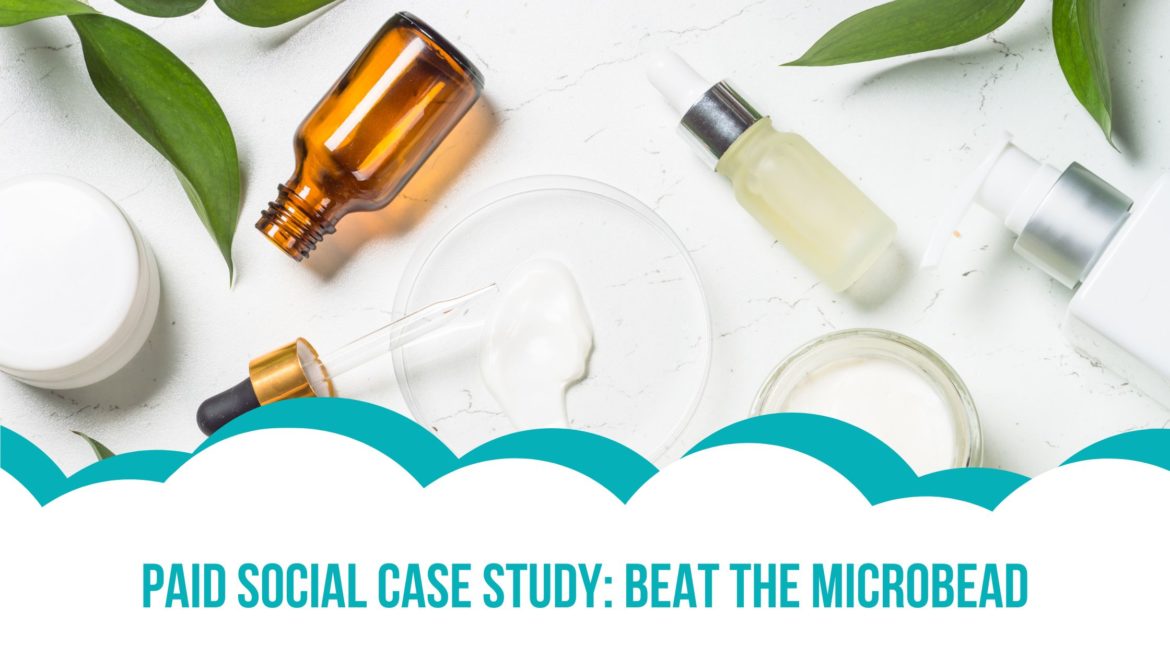
Beat the microbead – Social ads campaign for #Daretocare
Beat the Microbead was initiated by the Plastic Soup Foundation in 2012 to bring on the map the issue of microbead pollution through personal care products. They focus on raising awareness about all kinds of microplastics used in cosmetics and personal care products and incite consumers to buy plastic-free alternatives whenever possible. The organisation has developed an app available on iPhones and android, which allowed consumers to scan the ingredients on their beauty products to find out if they do contain microplastics.
In March 2022, Beat the microbead published a new report which showed that 9 out of 10 cosmetics tested contained microplastics. This was based on an analysis of 7,704 cosmetic and care products of the most popular brands of the four biggest cosmetic producers in Europe.
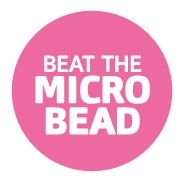
Following the publication of the report, they launched a campaign called Date to care. The campaign aimed to allow consumers to send a letter of complaint to the cosmetic producer of their choice and demand that they stop using microplastics in their cosmetics. To do so, a specific landing page was added to the website and a UX-friendly form was created, allowing the users to enter their details and email their brands at the push of a button.
To support them with this Dare to care campaign and to reach out to a new, bigger audience, Contentopia was asked to help with the set-up of paid ads on social media.
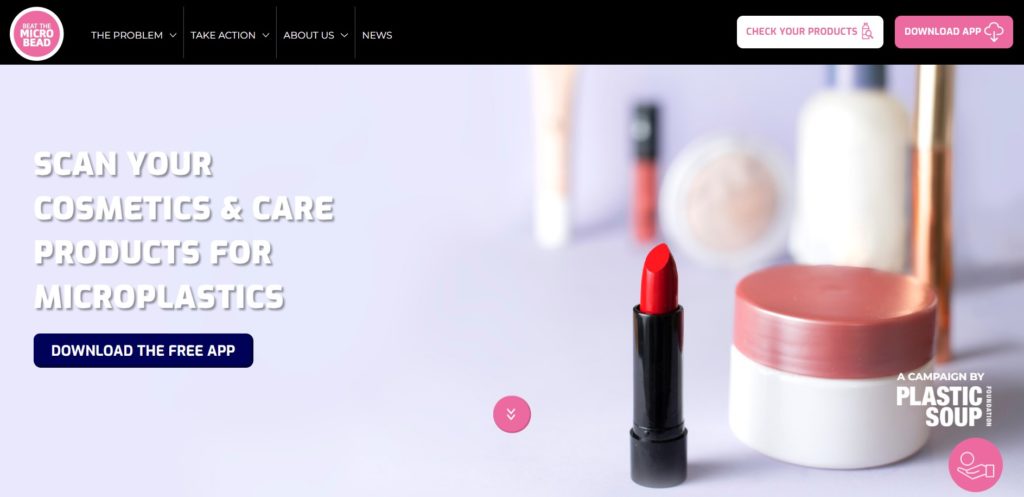
Background
Having worked with the organisation many times before, Contentopia was able to influence the design and content of the landing page for this campaign. This is important to note, as good UX is crucial for the success of any paid campaign, be it on social media or other channels. In this instance, we made sure that the content of the page was clear and to the point, that the form was accessible and responsive, and that the correct tracking was implemented on the page.
The goal of the ads
After consultation with the client, different goals were chosen for this campaign, depending on the advertising channel selected.
It was decided that four social channels would be used for this #daretocare campaign: Facebook and Instagram, TikTok, and Linkedin. Additionally, Google ads were also created.
- TikTok: Primary focus on downloads of the app Beat the microbead, followed by sending the letter of complaint to their brands.
- Linkedin: Send the letter to their brands, and download the full report on the microplastics study (published on the website).
- Facebook/Instagram: Download the Beat the microbead app and send the letter of complaint.
- Google ads: Download the app.

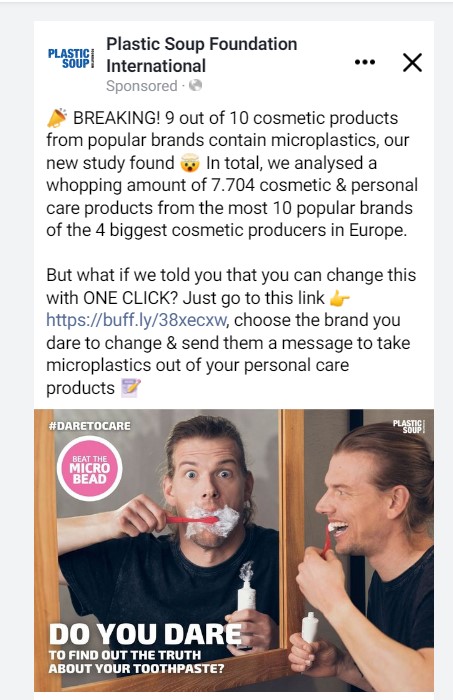
The approach
The main audience targeted for this campaign was younger than the usual audience for Beat the microbead. As such, it was necessary to be able to advertise on social channels popular with younger people, such as TikTok. This channel had never been used for paid advertising by the organisation, so the first step for us at Contentopia was to create a paid advertising account on TikTok.
We were given a set budget of just above 1,000 euros to spend across four social channels, for a total period of four weeks, or 250 euros per week. This meant that we had to be very careful with budget management if we wanted to maximise results with such a limited budget. It was decided to focus mostly on TikTok and Facebook/Instagram, as those channels were the most popular amongst the targeted audience for this campaign.
In total, 12 different ads were created, using a combination of different image materials depending on the channel.
For Tiktok, which is primarily video oriented, no video material was provided by the organisation at first. This meant that for the first ad, we had to be creative and make the most of what we had.
We created animated videos using the images provided by the organisation and made some adjustments to the visuals ourselves when needed (by adding a clear CTA for example).

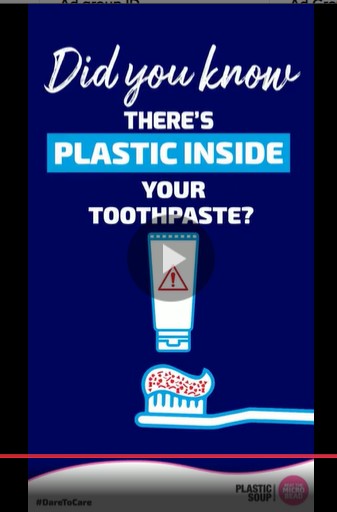
For a different ad, we were able to reuse a video by an ambassador who had done one himself and posted it on his TikTok account. Eventually, the same ambassador was contacted directly by the organisation and asked to make a slightly longer, more explanative video to use on social and paid ads. Using three different material for the ads allowed us to do some thorough testing and gain some valuable insights (again, this was the first time TikTok ads were used by the organisation).
On Facebook and Instagram, we used a combination of ads with images and texts, as well as a ‘boosted post’, based on positive results from previous campaigns. However, an extra challenge was added to this channel due to Facebook’s advertising restrictions for its ‘special ad’ category. The dare to care campaign had an international focus, but we were only able to advertise in The Netherlands due to the restrictions. This meant that we were limited in the audience we could reach, which in turn restricted the results.
As for Linkedin, advertising was kept to a minimum as the audience available on that network was not the main target for the campaign. Linkedin was mostly used as a way to gain extra visibility for Beat the microbead in general.
The results
Overall, the advertising campaign was a success and the client was very pleased with the results.
The average click-through rate (CTR) across all channels combined was above 10%, and the conversion rate (CVR) above 8%. The rates varied because the goals were not the same across all channels and some were easier to reach than others: the target to download the app, for example, had higher results than the one to sign the petition.
In particular, Tiktok was a success on the first try, as the CVR for downloads reached 12% at the peak of the campaign. Since the end of the #daretocare campaign, TikTok ads have been used successfully for other purposes.
In addition, the ads allowed the organisation to reach a new, bigger audience and gain online visibility. The paid ads alone increased the traffic to the website by 35% during the campaign.
What’s more, we also noticed that other actions were taken on the website such as signing up for the newsletter, making donations or visiting different pages. Finally, the number of followers on social channels also slightly increased everywhere.
Are you ready to discuss your next social paid campaign with us?
